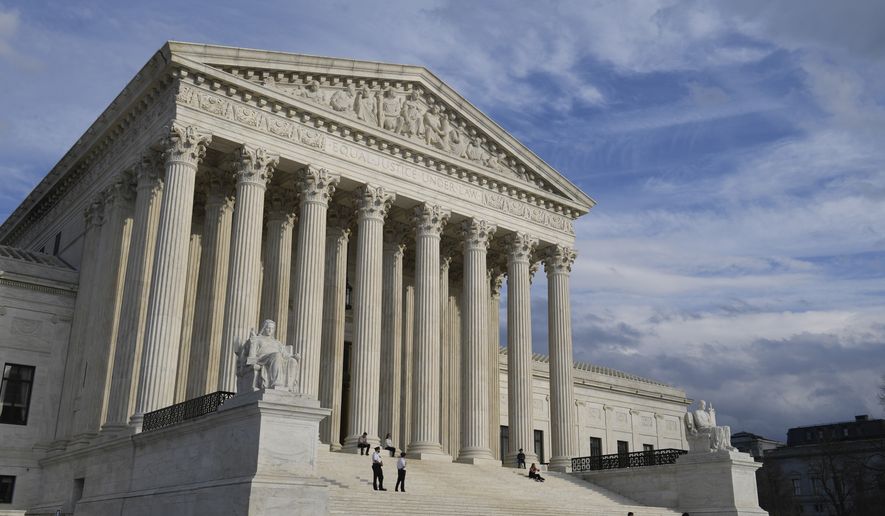The Supreme Court on Monday erased a lower-court ruling that had held a county court clerk was liable for telling a teen seeking a judge’s permission to bypass a parental consent law before obtaining an abortion that her parent would be notified anyway.
The decision to vacate the ruling drew a rebuke from Justice Ketanji Brown Jackson, who argued that the high court is using what’s known as the “Munsingwear vacatur” procedure too often.
Her dissent marks yet another area of Supreme Court procedure that has become contentious, as the justices are increasingly drawn into immediate rulings on politically charged issues of the day.
Vacatur is one process the high court uses to erase a lower-court ruling from the books, ensuring it isn’t used as precedent by other courts. A Munsingwear vacatur, named after a 1950 high court ruling, is a particular type of vacatur, where the justices find a case pending before them is moot, and want to make sure the lower court ruling doesn’t stand.
Justice Jackson said she’s seen “a sharp uptick” in Munsingwear vacaturs, which she said distorts the system of precedents and appeals that federal courts are supposed to rely on.
“Our common-law system assumes that judicial decisions are valuable and should not be cast aside lightly,” she said.
The case before the justices involved a 17-year-old girl in Missouri who wanted to obtain an abortion and wanted to avoid the state’s parental consent requirement by using the law’s judicial bypass. The bypass allows a juvenile to ask a judge for permission to consent to the abortion without a parent’s involvement.
Michelle Chapman, the clerk of the circuit court in Randolph County, had said she would still notify the girl’s parents.
The girl sued as a “Jane Doe” plaintiff in federal court, arguing Ms. Chapman deprived her rights by imposing an extra condition — the notification — on her ability to obtain an abortion.
Ms. Chapman argued her actions were cloaked in “quasi-judicial immunity” and said she couldn’t be sued. A federal district court and then an appeals court rebuffed her arguments.
She had appealed to the justices, but before they could take up the case the parties agreed it had become moot and should be dismissed.
Ms. Chapman also asked for the vacatur.
Justice Jackson said the request should have been denied.
For one thing, she said, Ms. Chapman was part of the reason the case became moot since she agreed to its dismissal in lower courts.
“Whatever the parties might have seen fit to agree to, we have long recognized that the equities generally do not favor Munsingwear vacatur when the party requesting such relief played a role in rendering the case moot,” she said.
Besides, she said, the case didn’t meet the “extraordinary” test that Munsingwear cases are supposed to meet. She said merely disagreeing with a ruling can’t be a good enough reason to ask that it be erased from precedent.
No other justice joined her dissent.
Some legal analysts say the court’s willingness to vacate lower rulings shows a disregard for those courts’ work and suggest it’s often-times an avenue for the justices to impose their ideological views.
The issue joins a host of other controversies over the court’s internal operations.
Legal analysts have complained that the court is weighing in on too many issues of the day through what’s become known as the “shadow docket,” where parties demand immediate and consequential rulings on major government policies without a case going through the full hearing and appeals process.
Cases involving immigration, environmental law and coronavirus policies have all been decided through shadow docket procedures in recent years.
The high court’s willingness to allow a single district judge to impose a nationwide injunction halting an administration policy for the whole country has also drawn fire from inside the court.
Judges appointed by both Democrats and Republicans have flexed nationwide injunctions to strike down presidents’ policies, and administrations of both parties have complained about the practice.
• Stephen Dinan can be reached at sdinan@washingtontimes.com.




Please read our comment policy before commenting.